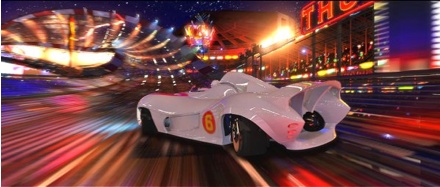Delta and Northwest Announce Merger
Travelers Could See Higher Prices, Fewer Flights in Biggest Ever Airline Combo
By LISA STARK, MATT HOSFORD and KATE BARRETT
April 14, 2008—
Delta and Northwest have agreed on a merger to create the largest airline in the world.
The boards of both airlines � which operate more than 2,700 daily flights combined � approved the combination Monday night after months of negotiations. Faced with skyrocketing fuel prices, grounded planes, canceled flights and soaring ticket prices, the carriers hope a merger will help them stay afloat during difficult times.
There will be no hub closures and Delta's Richard Anderson will be CEO of the merged operation, which will keep the Delta name and Atlanta headquarters, the airlines said in a statement.
The merger combines Delta's strengths in the South, Mountain West, Northeast, Europe and Latin America with Northwest's routes in the Midwest, Canada and Asia. Delta pilots reached an agreement on post-merger contract, the airlines said, and employees will get seniority protection and equity in the new airline.
According to a memo to employees, non-pilot staff of the two carriers will get a 4 percent equity stake in the new company on closing of the deal, to be allocated based upon relative payrolls of the companies and individual employee earnings. Also at closing, Delta frontline employees will get pay increases.
Northwest investors will get 1.25 Delta shares for each share they hold -- that's 17 percent more than today's closing price. The combined airline will have about $35 billion in annual sales and 75,000 employees, according to Reuters.
The International Association of Machinists and Aerospace Workers' said it opposes the deal because it's not in the best interests of employees or the communities served by the carriers. "We will do everything legally possible to oppose any merger that threatens our members' jobs, labor contracts, pensions, seniority and their right to union representation," the union said in a statement late Monday.
The deal comes as four major airlines have declared bankruptcy in the past three weeks. Others have recently tried to avoid a similar fate by raising fuel surcharges, reducing frequent flier mile benefits and charging a fee for an extra bag.
That's why, according to many aviation analysts, the merger is necessary to make the ailing industry healthy again.
"We have too many airlines with too many hubs offering too many seats, which is the reason this industry cannot be consistently profitable," said Ray Neidl, aviation analyst with Calyon Securities.
What It Means for Travelers
But for both for airline employees and passengers, a merger could be messy.
For travelers, a marriage between Delta and Northwest could mean fewer flights and higher fares.
Travelers in the Midwest, in particular, could have fewer options because Delta and Northwest both operate major hubs in that region and could drop overlapping flights during consolidation. It's unclear if Cincinnati and Memphis, for example, would remain hub cities as Delta and Northwest come together.
Of all of their routes, only nine of Delta and Northwest's overlap, according to data compiled by the OAG-Official Airline Guide.
If history is any indication, the number of seats available out of certain cities could drop dramatically. The number of seats out of St. Louis dropped by about 75 percent after TWA and American Airlines merged, according to OAG data.
"For consumers, the downside is that the airlines that merge are going to be trying their hardest to take planes out of the mix, to take destinations out of the network, and, therefore, they can have fewer choices and higher prices," Richard Aboulafia, aviation consultant with The Teal Group, told ABC News Friday.
For airline employees, the merger is also likely to create a new landscape.
Atlanta-based Delta employs nearly 49,000 people, while Minneapolis/St. Paul-based Northwest employs another 30,000. The airlines would be tasked with trying to merge their staffs, unions and operating systems.
Delta and Northwest also fly just one type of jet in common, meaning consolidating their fleets will be difficult. Delta operates a fleet of nearly 600 aircraft and Northwest operates a fleet of more than 500.
For pilots in particular, the effort to merge Northwest and Delta has been tricky. The merger has stalled in recent months because the 11,000 pilots employed by the two airlines could not come to an agreement on integrating their seniority lists.
Many say the merger could also set off a ripple effect throughout the industry and prompt other carriers to merge. That would result in even less competition and fewer choices for passengers.
"There's a feeling that if Delta and Northwest do create the biggest carrier, that everyone else will want to follow," Aboulafia said. "It's the theory of the musical chairs, basically. They could easily be followed by Continental and United � they're considered the most likely follow-on merger."
Next Steps
Now that Delta and Northwest managements have agreed on a merger, the Department of Justice also needs to sign off on the deal. Experts said there's a rush for that to happen sooner rather than later because the airlines expect it would be more challenging for the merger to go through during a possible Democratic administration.
Still, the airlines are confident the deal would be good for business, allowing Delta and Northwest to merge their strengths, especially in different areas of the international market. Delta flies to Europe while Northwest flies to Asia.
"There's real synergy between the two networks," Aboulafia said. "It's, arguably, from a geographic standpoint, from a network standpoint, the best possible merger."











 ricey Fuentes whenever the fancy strikes us. And, given’s today’s rocky consumer market and quite probable economic recession, it’s tougher than usual to maintain our expensive cigar hobbies.
ricey Fuentes whenever the fancy strikes us. And, given’s today’s rocky consumer market and quite probable economic recession, it’s tougher than usual to maintain our expensive cigar hobbies.


























